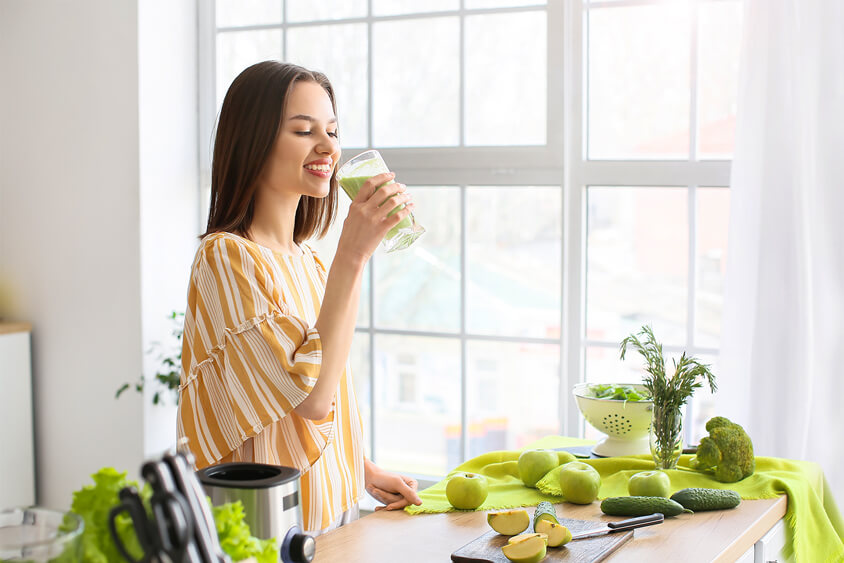
What is the difference between plantain and psyllium?
Thorough explanation of notable health effects and how to use them
2024.3.1
- # About nutrition
- # plantain
- # psyllium

Is psyllium something like a penlight used during live performances?
a! It's more like a plant (sweat)
You might be able to enjoy a healthy life even more with plantain (psyllium)!
“What is the difference between psyllium and plantain?”
“I would like to know what precautions to take when taking psyllium.”
Do you have any questions or concerns like those listed above?
Many people may have come across plantain and psyllium when researching how to make sweets and diet menus.
In this article, we will explain the differences between plantain and psyllium, their effects, and how to use them correctly. We will also tell you what you should be careful about when consuming it, so please refer to it.
Attention health conscious people!
What is plantain and psyllium?

Plantain is a type of wildflower that grows throughout Japan. It is also called "shazensou" because it often grows after cars or people walk by.
Difference between plantain and psyllium
Many people may wonder what is the difference between plantain and psyllium. In fact, psyllium is one of the more than 200 species of the genus Plantain.
Most of the psyllium sold in Japan is made from the powdered seed husk of Plantago ovata (English name: Psyllium), which belongs to the Plantago genus, and is called "Psyllium Husk."
Psyllium husk is rich in dietary fiber
Psyllium (Psyllium husk) is rich in dietary fiber.
Dietary fiber has the property of absorbing water and expanding, so mixing psyllium with food or drink will help you feel fuller.
The recommended amount of psyllium to consume varies depending on the product, such as 1 to 4 g per serving. According to the Cabinet Office's Food Safety Commission, the daily intake limit is 8g.※ 1
According to the Japanese Dietary Intake Standards, the ideal intake of dietary fiber for adults is 1g or more per day, which is determined from the perspective of preventing the onset of lifestyle-related diseases.※ 2According to the results of the 2019 National Health and Nutrition Survey, Japanese people tend to lack dietary fiber intake.※ 3
If your intake of dietary fiber is low, your intestinal environment will deteriorate, making it easier to cause constipation. Those who feel that they are not able to consume vegetables, fruits, mushrooms, etc. rich in dietary fiber in their daily diet may be able to efficiently ingest dietary fiber by incorporating psyllium.
Health benefits of plantain (psyllium)

The health effects of plantain are largely due to its dietary fiber (insoluble and water-soluble).
Some products containing dietary fiber derived from psyllium have been approved for labeling as foods for specified health uses.
Improvement of constipation
Both insoluble and water-soluble dietary fibers are broken down by intestinal bacteria and serve as food for "good bacteria" such as bifidobacteria and lactic acid bacteria.
Increasing the proportion of good bacteria will lead to an improvement in the intestinal environment, so those who suffer from constipation should actively consume dietary fiber.
lowering cholesterol levels
A study investigating the effects of psyllium in patients with mild to moderate hypercholesterolemia found an 12% reduction in total cholesterol and an 8% reduction in LDL cholesterol after 11 weeks.
From the above results, it can be said that psyllium is helpful in lowering cholesterol levels.
Suppression of rapid rise in blood sugar level
A study comparing a group that ate psyllium and bread (carbohydrates) with a group that ate only bread found that the group that ate bread and psyllium had a lower GI value.
GI valueGlycemic Index is an index that indicates the degree of rise in blood sugar levels after a meal. Foods with a high GI value include staple foods such as rice, bread, and noodles. In other words, psyllium has the effect of slowing down the rise in blood sugar after meals.
Sudden changes in blood sugar levels can cause damage to blood vessels, so suppressing rapid increases in blood sugar levels will help prevent lifestyle-related diseases such as arteriosclerosis.
Effective ways to use plantain (psyllium)

Here, we will explain how to effectively use plantain (psyllium).
If you want to incorporate plantain into your daily life, please use this as a reference.
Dissolve in your favorite drink
If you dissolve plantain in your favorite drink, such as coffee or fruit juice, the unique taste and aroma of plantain will be mixed in, making it easier to consume.
You can simply dissolve it in water and drink it, but since it has a unique taste, you may need to find ways to drink it to suit your own preferences.
Use in baking and cooking
Plantains have the ability to retain water, so they can be used to make chewy snacks and meals.
For example, it is recommended to mix plantain into the batter of pancakes, okonomiyaki, pancakes, etc. as it will give it a chewy texture.
Dietary fiber is an ingredient that modern people tend to lack, but if you use plantain in your daily snacks and meals, you can easily get the nutrients you need.
Use for diet
Psyllium has the property of absorbing water and expanding, so when mixed with water it swells and becomes jelly-like. When used in cooking or mixed with drinks, it will help you feel full and will help support your diet.
If you want to reduce the stress caused by hunger during carbohydrate or calorie restriction, please try a diet recipe that uses plantain.
We also recommend pancakes made with plantain and okara powder, and bracken mochi-style sweets made with plantain and water.
Precautions when taking psyllium

When taking psyllium, be careful of the following points:
- Observe the daily intake limit
- Be sure to dissolve it before ingesting it.
- If you are taking medicine or visiting the hospital, consult your doctor before taking it.
I will explain each point in detail.
Observe the daily intake limit
Although plantain is said to be a safe food, consuming too much can cause diarrhea and stomach pain.
When consuming, be sure to follow the upper limit of intake listed on the package.
Be sure to dissolve it before ingesting it.
Psyllium has the property of absorbing water, so be sure to dissolve it before ingesting it.
If you ingest psyllium without dissolving it, it absorbs water in your digestive tract and expands, which may lead to bloating and constipation.
If you are taking medicine or visiting the hospital, consult your doctor before taking it.
Ingestion of psyllium may reduce the absorption of some medicines.
Additionally, people undergoing treatment for colon cancer, intestinal obstruction, esophageal stricture, etc. should not consume psyllium as it may worsen their condition.
If you are taking medication or going to the hospital, consult your doctor before taking psyllium.

Psyllium is one of the more than 200 species of the genus Plantain.
Psyllium sold in Japan generally refers to the powdered husk of plantain seeds, and is often used in making sweets and cooking.
Since plantains are rich in dietary fiber, they can be expected to be effective in improving constipation, controlling cholesterol levels and rapid rises in blood sugar levels, and preventing lifestyle-related diseases.
Incorporate plantain into your daily life and efficiently ingest dietary fiber, a nutrient that Japanese people tend to lack.
References
- *1 Cabinet Office | Food Safety Commission | Food safety-related information details
- *2 Ministry of Health, Labor and Welfare | Dietary Intake Standards for Japanese (2020 Edition) | Carbohydrates
- *3 Ministry of Health, Labor and Welfare | XNUMX National Health and Nutrition Survey Report
*Product information is based on the official website.

Registered dietitian Hitomi Matsuura
At university, she studied a wide range of fields including applied nutrition, food science, and nutrition education, and obtained a registered dietitian license and a nutrition teacher license. After graduating, she worked as a registered dietitian at a nursery school, where she not only provided school lunches, but also focused on nutritional education, allergy countermeasures, baby food classes, and dietary guidance, consultation, and suggestions. After obtaining qualifications as an online food creator, she will work as a food writer, taking food photos, writing articles for online media, developing and supervising recipes, and providing online dietary guidance as a freelance registered dietitian.




